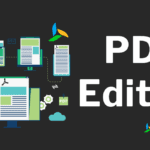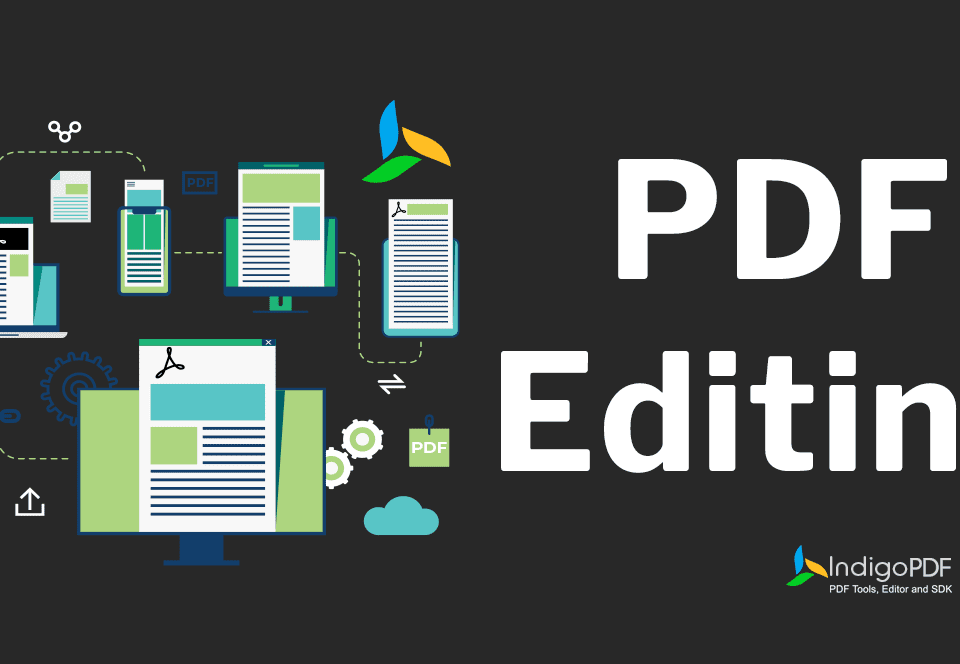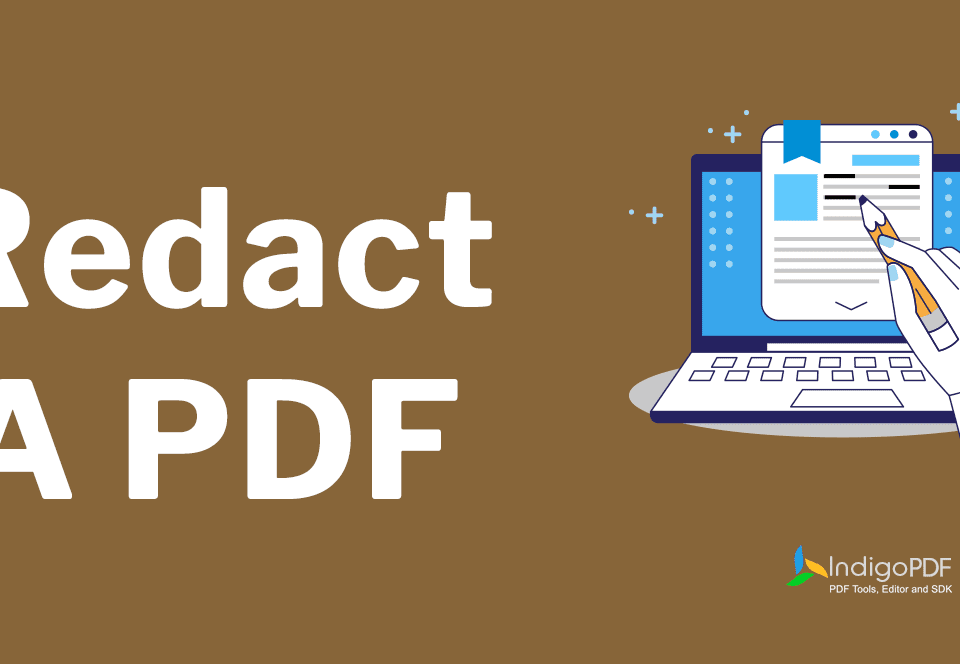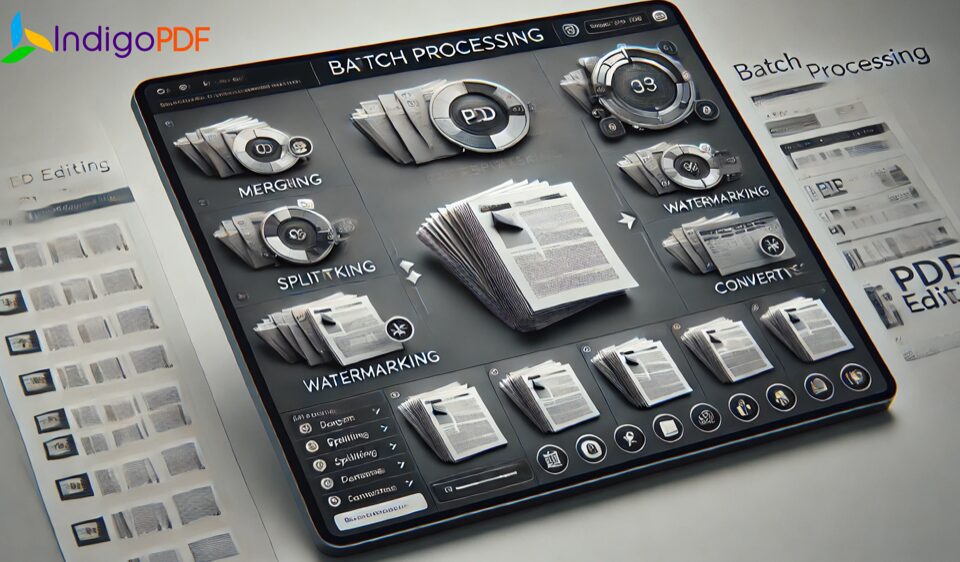
Mastering PDF Editing: Overcoming Common PDF Challenges
October 9, 2023Choosing between PDF editors (PDF Tools Software) and word processors in the digital era can significantly impact productivity and document management. This comprehensive guide explores each tool’s features, benefits, and ideal scenarios, helping you decide when and why to use them.
Understanding Word Processors
What is a Word Processor?
A word processor is software for creating, editing, and formatting text-based documents. Famous examples include Microsoft Word, Google Docs, and Apple Pages. These tools are essential for writing reports, drafting letters, or creating resumes.
Key Features of Word Processors
- Text Formatting: Advanced options for fonts, colors, paragraph alignment, and more.
- Collaborative Editing: Real-time collaboration allows multiple users to work on a document simultaneously.
- Templates: Pre-designed templates for various document types like resumes and reports.
- Spell-Check and Grammar Correction: Built-in tools to ensure writing accuracy.
- Version History: Ability to track changes and revert to previous versions.
Advantages of Word Processors
- Rich Text Formatting: Ideal for creating visually appealing documents with intricate formatting.
- Collaboration: Perfect for team projects where multiple users need to contribute simultaneously.
- Ease of Use: User-friendly interfaces simplify the process of document creation and modification.
- Version Control: Manage different versions of a document, making it easier to track changes and updates.
Limitations of Word Processors
- Formatting Consistency: Sharing documents across platforms can sometimes lead to formatting issues.
- Security: Word processors typically offer limited document security compared to PDFs, which can be encrypted and password-protected.
When to Choose a Word Processor
Opt for a word processor when:
- You need to create documents requiring rich text formatting and visual appeal.
- Collaborative editing is essential, particularly in team environments.
- Frequent updates and change tracking are necessary.
Understanding PDF Tools Software
What is a PDF Tools Software?
PDF Tools Software allows you to create, edit, and manipulate PDF files. It is known for maintaining a fixed format across devices. PDF editors like Adobe Acrobat, Nitro PDF, and Foxit PhantomPDF are preferred for official and legally binding documents. IndigoPDF Tools offers a free, user-friendly option for basic PDF needs, including merging, splitting, and converting documents.
Key Features of PDF Tools Software
- Fixed Layout: Ensures document consistency across all devices.
- Annotations: Add comments, highlights, and other annotations.
- Form Filling: Create and fill out forms electronically.
- Digital Signatures: Securely sign documents.
- File Compression: Reduce file size for easier sharing without quality loss.
- Free PDF Tools: IndigoPDF Tools offers free features like merging, splitting, converting, and compressing PDFs, making it an accessible option for everyday PDF tasks.
Advantages of PDF Tools Software
- Consistency Across Platforms: Maintain document formatting regardless of the device or software.
- Security: Encrypt and password-protect documents, making them ideal for sensitive content.
- Universal Acceptance: Widely accepted across industries and platforms for official documentation.
- Cost-Efficiency: Tools like IndigoPDF provide essential PDF functionalities without cost, making them accessible for users with basic needs.
Limitations of PDF Tools Software
- Editing Complexity: Editing is more complex than word processors, especially for extensive text revisions.
- Cost: Advanced PDF Tools Software often requires a subscription or purchase. However, free tools like IndigoPDF offer essential features without a financial burden.
When to Choose a PDF Tools Software
Opt for a PDF Tools Software when:
- You need documents to retain their formatting across different platforms and devices.
- Security is paramount, requiring encryption or digital signatures.
- The document is finalized, with only minor edits or annotations necessary.
PDF Tools Software vs. Word Processors: A Comparative Analysis
Document Creation
- PDF Tools Software: This software is best for documents requiring a fixed layout, like contracts and manuals.
- Word Processors: Ideal for dynamic documents that need rich formatting and frequent updates.
Document Editing
- PDF Tools Software: Suitable for minor edits, annotations, and signatures on finalized documents.
- Word Processors: Superior for extensive edits, reformatting, and adding complex elements.
Document Formatting
- PDF Tools Softwares: Ensure consistent formatting across all devices.
- Word Processors: Offer flexibility in formatting, allowing creative designs and custom layouts.
Choosing the Right Tool for the Job
The choice between a PDF Tools Software and a word processor depends on your project’s requirements. Here are common scenarios:
Case Studies: Scenarios for PDF Editors
- Legal Contracts: Use a PDF editor to create and share secure, universally accessible, and unalterable contracts.
- Instruction Manuals: PDFs ensure consistent formatting across various devices.
- Marketing Materials: Use PDF editors for brochures and flyers that need to retain specific layouts and designs.
Case Studies: Scenarios for Word Processors
- Research Papers: Word processors are ideal for drafting and editing research papers requiring frequent revisions.
- Team Projects: Collaborate with multiple contributors on reports or presentations.
- Creative Writing: Use word processors to write stories or content that benefit from rich text formatting and easy revisions.
Tips for Seamless Document Management
Convert Between Formats: Utilize tools like IndigoPDF to convert documents between PDFs and word processor formats for compatibility and enhanced usability.
Backup Your Documents: Back documents to cloud storage or external drives to prevent data loss.
Utilize Templates: PDF editors and word processors offer templates to save time and ensure consistency in document creation.
Evaluate Your Needs: Assess the nature of your work to decide the best tool, whether it’s a word processor’s editing power or a PDF editor’s security and consistency.
Conclusion
There is no definitive winner in the debate between PDF editors and word processors—it all depends on your specific needs. Both tools offer unique advantages, and understanding when and why to use each can significantly enhance productivity and document management efficiency. Choosing the right tool for the task ensures your documents are well-crafted, secure, accessible, and appropriately formatted for your audience.
FAQs
- Can I convert a PDF to a Word document using a PDF editor?
- Yes, most PDF editors, including IndigoPDF, offer PDF-to-Word conversion for easier text editing.
- Is collaboration possible on a PDF document?
- Yes, collaboration is possible, though less seamless than in word processors.
- Do all word processors include spell-check and grammar correction?
- Yes, most modern word processors have built-in spell-check and grammar correction tools.
- Are there free PDF editors available?
- Yes, IndigoPDF Tools is a free option that offers essential PDF functionalities, such as merging, splitting, converting, and compressing files.
- Can I password-protect a document using a word processor?
- Some word processors allow password protection, but PDFs offer more robust security features.





